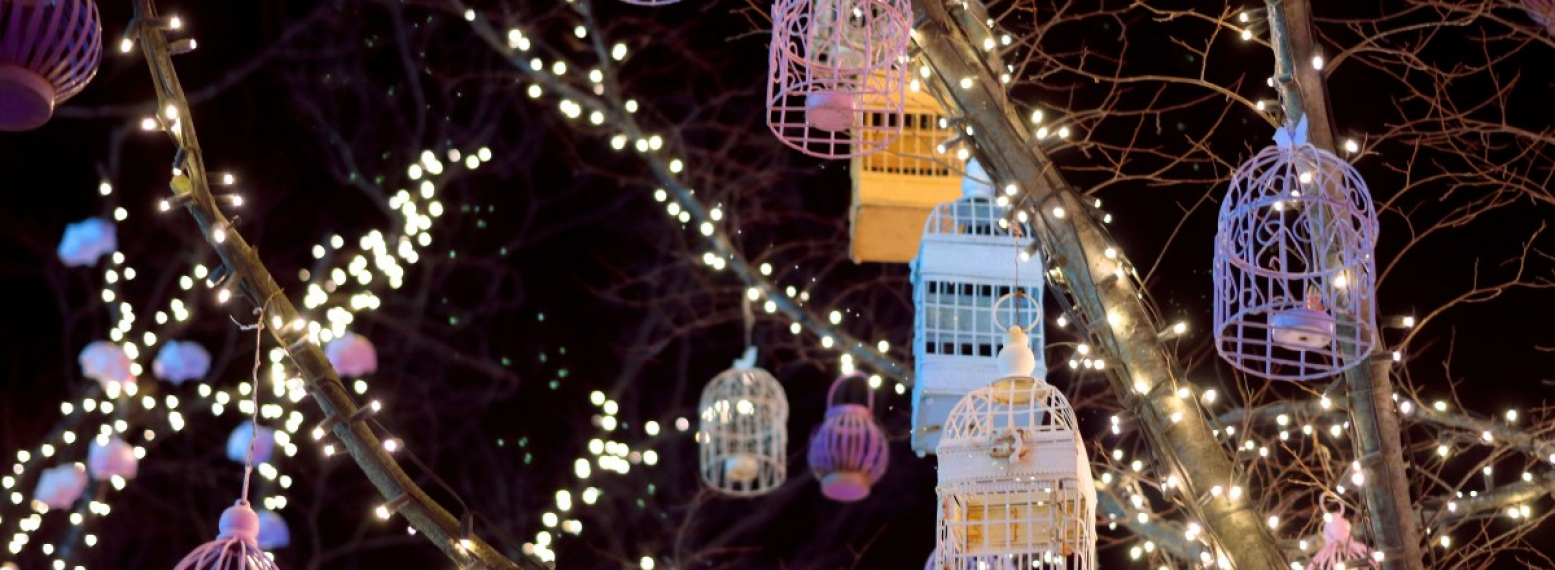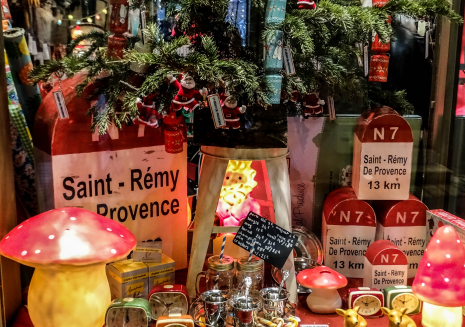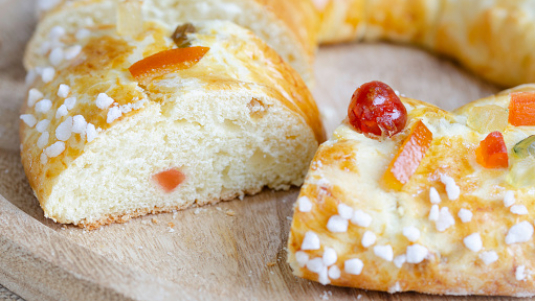

In the Alpilles and in Provence in general, calendar celebrations are strong traditions. It all starts on December 4, the day of Saint Barbara, and ends on February 2 with Candlemas. Numerous traditions, festivals and customs take place at this time of year. Christmas in Provence is above all a family celebration, intimate and convivial. It is also a symbol of the rebirth of nature in the heart of winter.



In Provence, on December 4, Saint Barbara's Day, it is customary to sow wheat grains on damp cotton in a cup. The tradition is to have 3 cups of wheat. These cups, after germinating for 3 weeks, are used to decorate the Christmas table during the Big Supper.
As they say: "Quand lou blad vèn bèn, tout vèn bèn", which means "When the wheat goes well, everything goes well" ! Wheat is a sign of prosperity for the following year.
In the first days of November, many Santon fairs are organized throughout Provence. The genuine Santon, from the Provençal “Santoun” (little saint), is made of clay and created by hand. The Santons must then take on a human form, mimic a character and even a social rank.
The beginning of December is the ideal time to make the crib. The setting is a reconstruction of a Provençal village and its little world : baker’s, doctor’s, etc. It goes without saying that the biblical characters that make up the crib are well represented : the Blessed Virgin and Saint Joseph, to which are added, on December 24 at midnight, the Child Jesus as well as the shepherds with their flocks, the donkey and the ox. On January 6, the day of the Epiphany, the Three Wise Men are added : Gaspard, Melchior and Balthazar.
Every year, the Pastorale des Santons, a work by Yvan Audouard, is produced every year in Saint Rémy-de-Provence. It is the staging of a Provençal crib on a human scale. Amateur actors from Saint-Rémy-de-Provence, young and old, take on the role of a Provençal santon for an evening. The story, the Provençal songs and the glorification of the birth of the “divine child” make this evening memorable.
“Don’t be surprised if Bethlehem is located in the Alpilles in Provence and if the witnesses of the birth of little Jesus speak with the accent of the Midi*” (*South of France).




The tradition of the bonfire comes from the writings of Frédéric Mistral. The two Saint John’s Days are close to the solstices; Saint John the Baptist to the summer solstice and Saint John the Evangelist to the winter solstice. It is a tradition rooted in Provençal families where, in the past, a log from a fruit tree that died during the year was burnt. This festival symbolizes purification and the wish for renewal and takes place on the Sunday before Christmas.
Today, the Saint-Jean Bonfire is celebrated with folkloric dances in Arlesienne costumes around the fire in the centre of Saint-Rémy-de-Provence. The Association “La Respelido Provençalo” plays an important role in Provençal Christmas tradition by training the youngest people all year round in Provençal customs and traditions.

The Big Supper is served on Christmas Eve, before going to midnight mass. It is a meagre meal. There is a symbolism behind the table setting, from the tablecloth to the dishes :
The table is covered with 3 white tablecloths and displays 3 candlesticks and the 3 cups of sprouted wheat of Saint Barbara’s Day. The number 3 refers to the Trinity. Then there are the 7 thin dishes in memory of the 7 pains of Mary. All dishes are served at the same time at the beginning of the meal. The lean dishes differ from one corner of Provence to another. As they do not include meat, only the following foods are on the table: fish, vegetables, eggs, snails, gratin or soup...

The Midnight Mass is the heart of Provençal Christmas, celebrating this sacred moment of the year. A living crib where the characters are interpreted by the inhabitants of the village may be staged during the mass. You will attend the Ceremony of the Shepherding: a newborn lamb is brought to the crib by the shepherds as an offering. In Provence, the shepherds are very important at midnight mass where they are always the first to bring their gifts. The mass is celebrated in French and rhythmed with Provençal songs.
Once the ceremony is over, the families go home and eat the thirteen desserts.
After Mass, enjoy the 13 desserts. These vary from one place to another and represent Jesus and his 12 apostles.
• The four beggars: dried fruits, the colours of which recall that of the robes of the beggars' orders.
- Walnuts and hazelnuts, representing the Augustinian order ;
- Sultanas, representing the Dominican order ;
- Almonds, representing the Carmelite order ;
- Figs, representing the Franciscan order.
• Pompe à huile : olive-oil brioche bread that must be broken and not cut like the bread of Christ at his last meal.
• Dates, which can be filled with coloured almond paste. They represent Christ come from the East and recall the origin of the Magi.
• The black and white nougats symbolize the black and white penitents.
In addition to these 8 pillars, each person adapts the rest according to their taste and local traditions :
• Seasonal fruits : mandarins, apples, pears, grapes or green melon ;
• Candied fruit ;
• Quince paste ;
• Calissons (diamond-shaped sweets made from ground almonds and candied fruits) ;
• Oreillettes (light and crisp pastry fritters).



Epiphany is a Christian festival that takes place on January 6. In Christianity, this festival refers to the arrival of the Magi to the divine child, Jesus. The Three Wise Men (Melchior, Gaspard and Balthazar) take their places in the cribs on January 6 and remain there until Candlemas (February 2).
Everywhere in France, January 6 also announces the launching of the Galette des Rois. In Provence, we foremost share the Gâteau des Rois (Kings’ Cake or Kings’ Crown), a round brioche with a hole in its centre, flavoured with orange blossom and decorated with candied fruit and large grains of sugar. Inside, we add a real bean and a small ceramic nativity figurine, called a santon.
Before cutting the Kings' Cake, know that a few rules apply: traditionally, the youngest person present sits under the table and takes the responsibility to blindly distribute each piece of cake. And it is up to the person who finds the bean in their piece to bring the next cake. A way to make greediness last? Anyhow, this tradition continues right through to Candlemas on February 2. And at Candlemas, it is the pancakes that are in the spotlight!
Discover the recipe for the king's cake